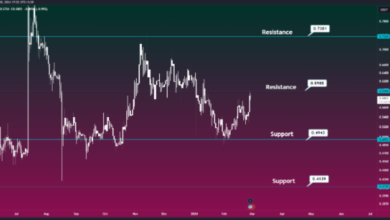Connected TV Statistics: What the Latest Data Reveals About Viewership

Connected TV (CTV) has redefined how audiences consume media, shifting from traditional linear TV to internet-enabled streaming on devices like smart TVs, streaming sticks, and gaming consoles. As platforms like Roku, Hulu, and Netflix’s ad-supported tier gain traction, CTV’s viewership is surging, offering brands a dynamic channel to reach engaged audiences. Understanding the latest CTV viewership statistics is crucial for marketers aiming to craft effective advertising strategies. This article delves into current data, highlighting key trends, demographic insights, and implications for advertisers in the rapidly evolving CTV landscape.
The Surge in CTV Adoption
CTV has become a mainstay in households worldwide, driven by the proliferation of broadband internet and affordable streaming devices. In the U.S., over 85% of households now own at least one CTV device, such as a smart TV, Roku, or Amazon Fire Stick, reflecting near-universal penetration. By 2025, an estimated 238 million U.S. viewers will engage with CTV, accounting for nearly 70% of the population. Globally, CTV viewership is also climbing, with markets like the UK and India reporting significant growth in streaming adoption.
This widespread adoption underscores CTV’s role as a primary entertainment platform. Unlike linear TV, which is constrained by fixed schedules, CTV offers on-demand and live content, catering to viewers’ desire for flexibility. For example, a family might binge a series on Netflix via their smart TV, while a commuter streams YouTube Shorts on a mobile device synced to a CTV platform. This versatility drives engagement, making CTV a critical channel for advertisers.
Viewership Trends and Time Spent
Streaming has surpassed traditional TV in viewing time, marking a pivotal shift in media consumption. In 2024, streaming accounted for over 40% of total TV usage in the U.S., compared to a 10% decline in cable viewership and a 15% drop in broadcast prime-time ratings. By 2025, CTV is projected to maintain this dominance, with viewers spending an average of 2-3 hours daily on streaming platforms.
The rise of free ad-supported streaming TV (FAST) services, like The Roku Channel and Pluto TV, has further boosted viewership. In 2024, 111.5 million U.S. viewers engaged with FAST platforms, drawn to their no-cost, ad-supported model. These services appeal to casual viewers seeking easy access to diverse content, from classic shows to live news. For instance, a retiree might watch reruns on Tubi, contributing to the platform’s growing viewership.
CTV’s high completion rates—averaging 94.5% for 15-second ads—highlight its engagement advantage. Unlike mobile or desktop ads, CTV’s “lean-back” viewing experience ensures viewers are more likely to watch ads fully, enhancing their impact. This trend positions CTV as a preferred medium for advertisers seeking both reach and attention.
See Also: A Step-by-Step Guide to the Clinical Research Process
Demographic Insights
CTV viewership spans generations, but demographics reveal distinct patterns that inform advertising strategies.
Younger Audiences Lead the Way
Millennials and Gen Z dominate CTV usage, with 62.6 million millennial viewers and 56.1 million Gen Z viewers projected in the U.S. by 2025, representing growth of 2.1 million and 6.5 million, respectively, since 2022. Approximately 62% of daily CTV viewers fall within the 18-34 age range, driven by platforms like YouTube and TikTok, which resonate with younger audiences through short-form and on-demand content. For example, a Gen Z viewer might stream gaming content on Twitch via a PlayStation, reflecting their preference for interactive, digital-native platforms.
Growing Senior Audience
While younger viewers lead, older demographics are increasingly adopting CTV, particularly for on-demand content. In 2024, 32.4 million Baby Boomers used CTV, though their numbers are expected to decline slightly by 2025. Older viewers, aged 55 and above, account for 24% of CTV viewership, often using smart TVs to access subscription services like Netflix or Hulu. This trend opens opportunities for advertisers targeting high-income households or retirees, such as healthcare or financial services brands.
Diverse Audience Preferences
CTV appeals to diverse groups, with 78% of Hispanic viewers and 63% of African American viewers preferring streaming over linear TV. These audiences report higher ad relevance on CTV, with 29% visiting a website after seeing an ad. For instance, a brand targeting Hispanic viewers might advertise on a platform like Peacock, leveraging culturally relevant content to drive engagement.
Content Consumption Patterns
CTV viewers consume a mix of subscription-based (SVOD), ad-supported (AVOD), and FAST content, reflecting varied preferences. In 2022, 34% of CTV users preferred free, ad-supported content, 33% favored ad-free paid services, and 32% opted for tiered models offering both. This balance highlights the appeal of cost-effective options like Tubi alongside premium platforms like Disney+.
Popular content includes movies, TV series, sports, and live events. By 2025, 118 million U.S. viewers are expected to stream sports on CTV, driven by platforms like ESPN+ and YouTube TV. Original content also drives viewership, with 67.5% of millennials seeking exclusive TV shows and 71.4% looking for original films. A family might watch a Marvel series on Disney+ via a smart TV, while a sports fan streams a live game on a Roku device, showcasing CTV’s versatility.
Ad Engagement and Effectiveness
CTV ads outperform other digital formats in engagement and relevance. Approximately 65% of CTV viewers believe targeted ads enhance their experience, compared to 57% who find CTV ads more relevant than linear TV ads. This perception stems from CTV’s data-driven targeting, which uses viewer behavior, preferences, and household data to deliver personalized ads. For example, a retailer might target pet owners with ads on Hulu, aligning with their viewing of pet-related content.
High viewability rates—over 90% for CTV ads—further enhance effectiveness, as viewers are less likely to skip ads in a lean-back setting. Interactive formats, like QR code ads, drive direct actions, with brands reporting increased website visits and conversions. A fashion brand might use a shoppable ad on Roku, allowing viewers to purchase featured items instantly, capitalizing on CTV’s actionable potential.
Implications for Advertisers
The latest CTV statistics reveal significant opportunities for brands. The platform’s massive reach—238 million U.S. viewers by 2025—makes it ideal for awareness campaigns, while its targeting precision suits performance-driven goals. Advertisers can leverage CTV’s high completion rates and interactive formats to drive conversions, particularly for e-commerce and DTC brands.
Demographic insights guide channel selection. Younger audiences on platforms like YouTube require short, engaging ads, while older viewers on Netflix’s ad-supported tier respond to polished, storytelling-driven creative. Diverse audiences, such as Hispanic or African American viewers, demand culturally relevant messaging to maximize impact.
Budget allocation is critical. With CTV ad spending projected to reach $48 billion globally in 2025, up 15% from 2024, brands must balance investment across platforms. Programmatic buying, expected to account for 70% of CTV ad transactions, offers cost efficiency through real-time bidding. A small business might start with a $5,000 budget on Tubi, scaling to premium platforms like Hulu as results justify expansion.
Challenges in CTV Advertising
Despite its growth, CTV advertising faces hurdles. Competition for premium ad inventory, especially on platforms like Netflix, drives up costs, with CPMs ranging from $20 to $40. Brands can explore FAST services for affordable alternatives. Ad fatigue is another concern, as repetitive ads reduce engagement. Rotating creative and capping frequency—limiting ad exposures per user—helps maintain interest.
Privacy regulations, like GDPR, restrict data usage, impacting targeting. Brands can counter this by building first-party data through loyalty programs or opt-in incentives, ensuring compliance while preserving precision. Device fragmentation—across smart TVs, streaming sticks, and consoles—requires ads to be optimized for varied interfaces, adding complexity.



